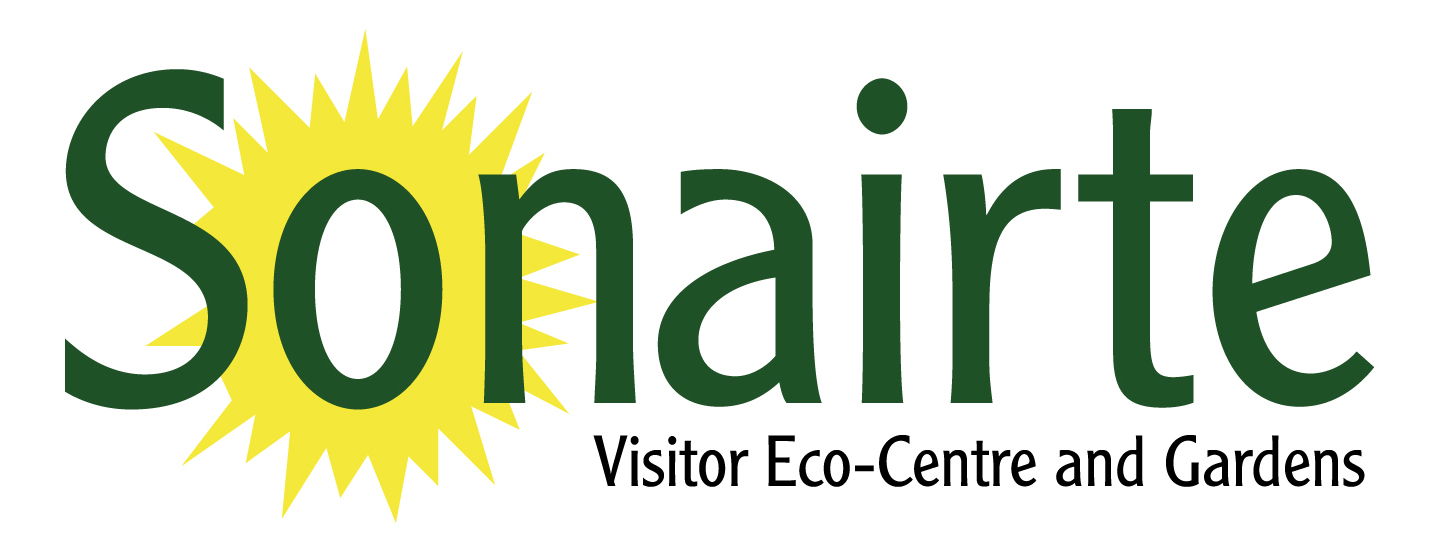Grasslands are habitats where the vegetation is dominated by species of grass (Poaceae). In Ireland, natural grasslands such as that found in Sonairte are typically composed of a broad variety of native and non-native grasses, as well as thistles, docks, teasels, buttercups and speedwells.

Buttercups
Finches are common grassland birds. The specialized adaptations of different species of this family of birds on the Galapagos Islands played a big role in Charles Darwin’s early understanding of evolution. In Ireland, different species of these birds also have their own distinctive features.
The Goldfinch, with its bright gold wings and red face is perhaps the most recognizable Finch. These birds favour open meadows and waste grounds where they use their narrow bills to feed on the seeds of spiked plants such as thistles and teasels. Greenfinch, with green and yellow feathers are also easily recognized. Like Goldfinch, Greenfinch form small flocks in open land, typically feeding on grain and seeds in farmlands.
Chaffinch are colourful birds with pink underparts and a grey-blue crown. They are found in both grassland and woodland habitats and will feed mainly upon insects.
The Song Thrush is one of the best known grassland birds often seen hopping along the ground and hedge margins in search of food. Thrush mainly eat snails, who’s shells they have learned to crack on rocks and hard surfaces. They also feed on earthworms which live abundantly in grassland soils. Other birds that feed on worms in grassland areas include Rooks, Jackdaws and Carrion Crows.
Rabbits, Mice and Frogs are common to many types of grassland and in turn attract predators such as Kestrels, Buzzards and Foxes.
Kestrels are Ireland’s most common bird of prey. They are relatively small birds which can be frequently seen hovering in mid-air over grasslands watching for the movement of small animals. Buzzards are much larger than Kestrels and more often seen circling and soaring up on rising air currents. Like Kestrels, Buzzards will hunt small animals but they will also scavenge for much of their food. Irish Buzzard populations have increased greatly in recent years and a pair can often be seen soaring over the woods and fields across from Sonairte on the other side of the River Nanny. Red Kites are even larger than Buzzards. They are huge Eagle-like raptors with wingspans around 1.5 metres.
Formerly extinct in Ireland, Red Kites have recently been reintroduced at sites along the east of Ireland. Because of their tremendous size however, Red Kites are quite slow and rarely hunt. They are primarily scavengers and can sometimes now be seen feeding on roadkill around Meath, Louth, Wicklow and Co. Dublin.
Grassland Flora
Summer is the best time to see the full extent of species on a natural grassland habitat such as that in Sonairte. This is the time grasses produce their flowering heads and so can be identified. Meadow-grasses, Bent-grasses, Fescues and Cats-tails are the most commonly seen groups in Ireland. Grasses are pollinated and their seed dispersed by the wind so they have no need for insect pollinators.

Summer Grasses

Grasses
Another important group of plants to the grassland however are Legumes. These include Clovers, Vetches, Medicks and Trefoils. Legumes also include farmed crops like Peas and Beans. This family of plants depend on pollinating insects for reproduction so they can produce pea-pods full of seeds for the next generation. Legumes in turn are very beneficial to the soil as they fix Nitrogen from the air into solid forms which can be taken up by plant roots as an important nutrient.

Runner Beans Walled Garden
